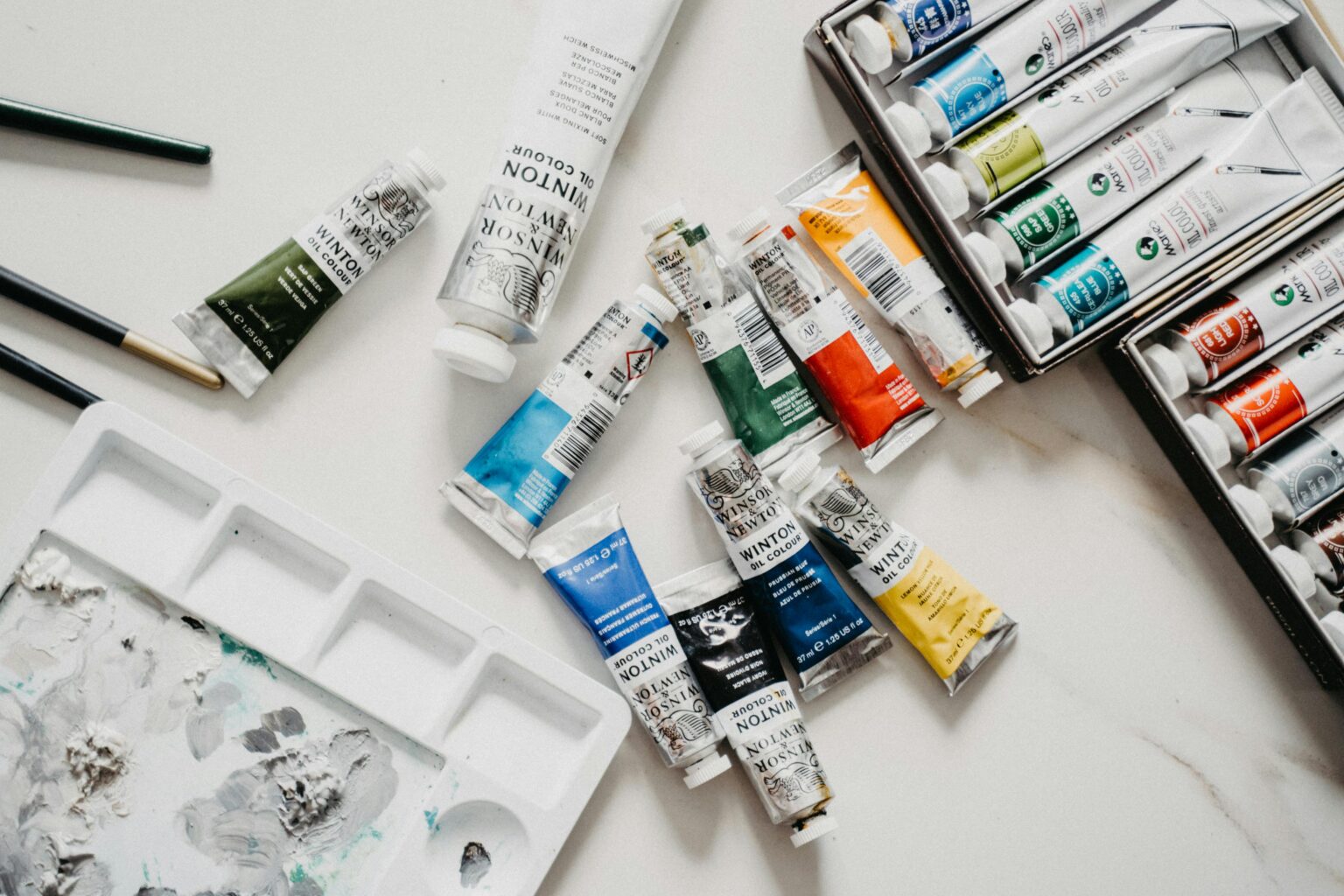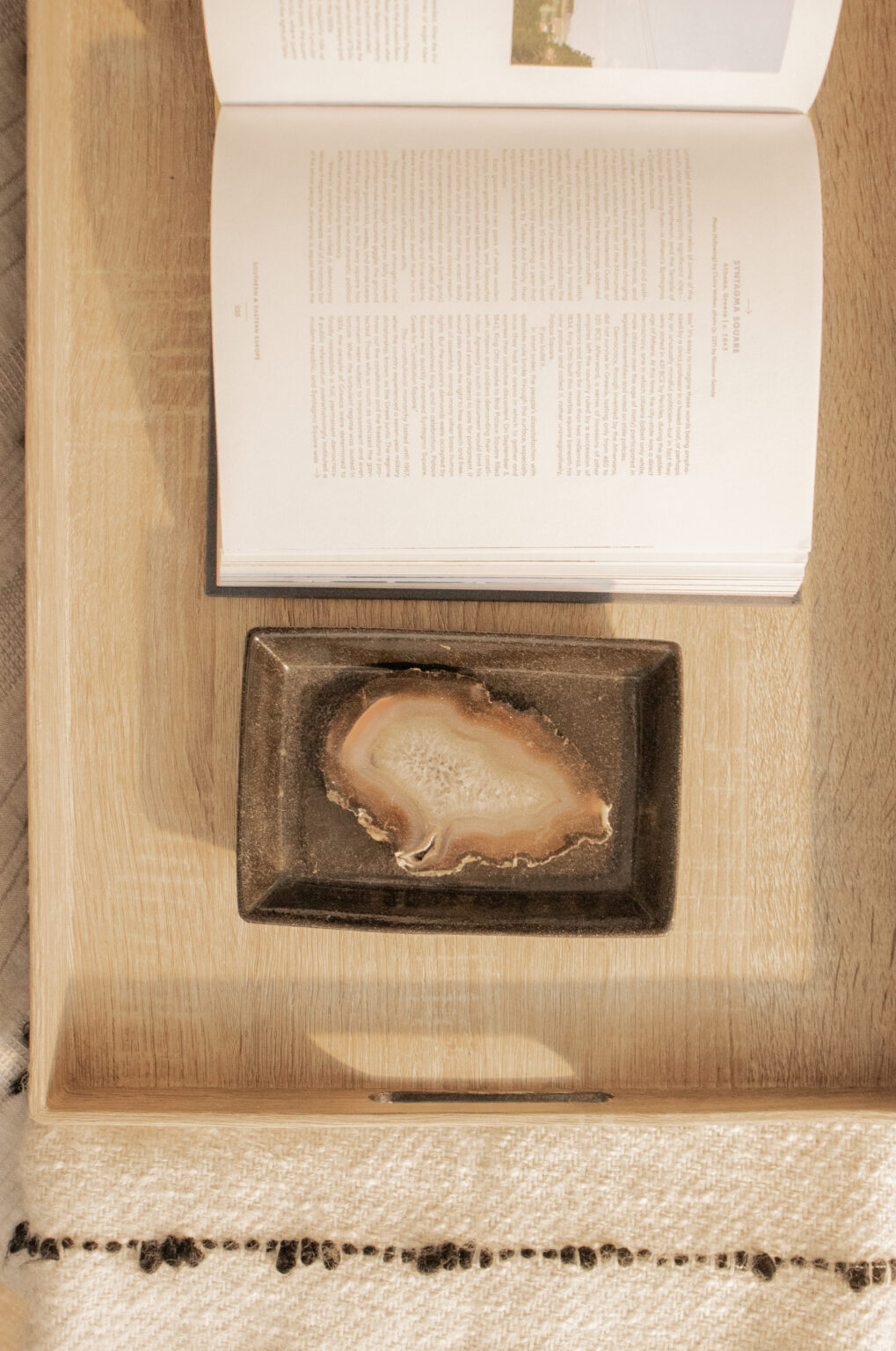Someone just grabbed your freebie and they’re thrilled to have found it! With a tripwire, you can keep building on their excitement and take this golden opportunity to turn a new lead into a loyal customer.
A tripwire starts with a small, irresistible offer — think a $7 guide or $9 template pack — that feels like a total no-brainer purchase. The best part? A well-crafted tripwire doesn’t feel pushy, it feels like a thoughtful next step; an “upgrade” to the value you’ve already given them, for those serious about making progress.
What is a tripwire?
After they grab your freebie (which could be a guide, checklist, etc.), you redirect people to a “thank you page” and offer them a bonus. That bonus could be another freebie, or it could be a small-ticket offer, think something priced at $10 or less. That’s how a tripwire funnel begins.
If a person accepts that little bonus offer, you then offer something else that’s packed with value, like an inexpensive course or template pack. And if they say yes to that, maybe you offer to upgrade them to a more expansive package or try to cross-sell a complimentary product.
And if they say yes to that? Well, you get the idea!
A tripwire funnel could technically be endless, but it’s not about squeezing every penny out of people. Really, use it wisely and treat it as a chance to serve your audience by introducing them to your highest-value offers.
Why is a tripwire useful?
A tripwire creates a low-risk, high-reward opportunity for leads to become paying customers. By offering something highly valuable at a low price point, you overcome the biggest hurdle in sales: Getting someone to make their first purchase. This initial transaction builds trust and credibility.
Tripwires also help you qualify leads. Those who say “yes” even to the smallest purchase are more likely to invest in higher-ticket offers at a later date. Meanwhile, those who turn down every paid offer likely need more nurturing (in the form of an email sequence) before you try to sell to them again.
An added bonus: Tripwire funnels help generate revenue from new leads right away, offsetting the cost of your freebies. In fact, tripwires are how a lot of coaches and small businesses fund their social media ad campaigns. They really work!
How to Create a Tripwire Funnel
If you’re starting from scratch with email marketing, I suggest setting up an opt-in funnel first. You can also pull from your existing freebies, landing pages, and email sequences to build a tripwire variation faster.
Give yourself about a week to get your first tripwire funnel up-and-running.
#1 Create a High-Value Freebie
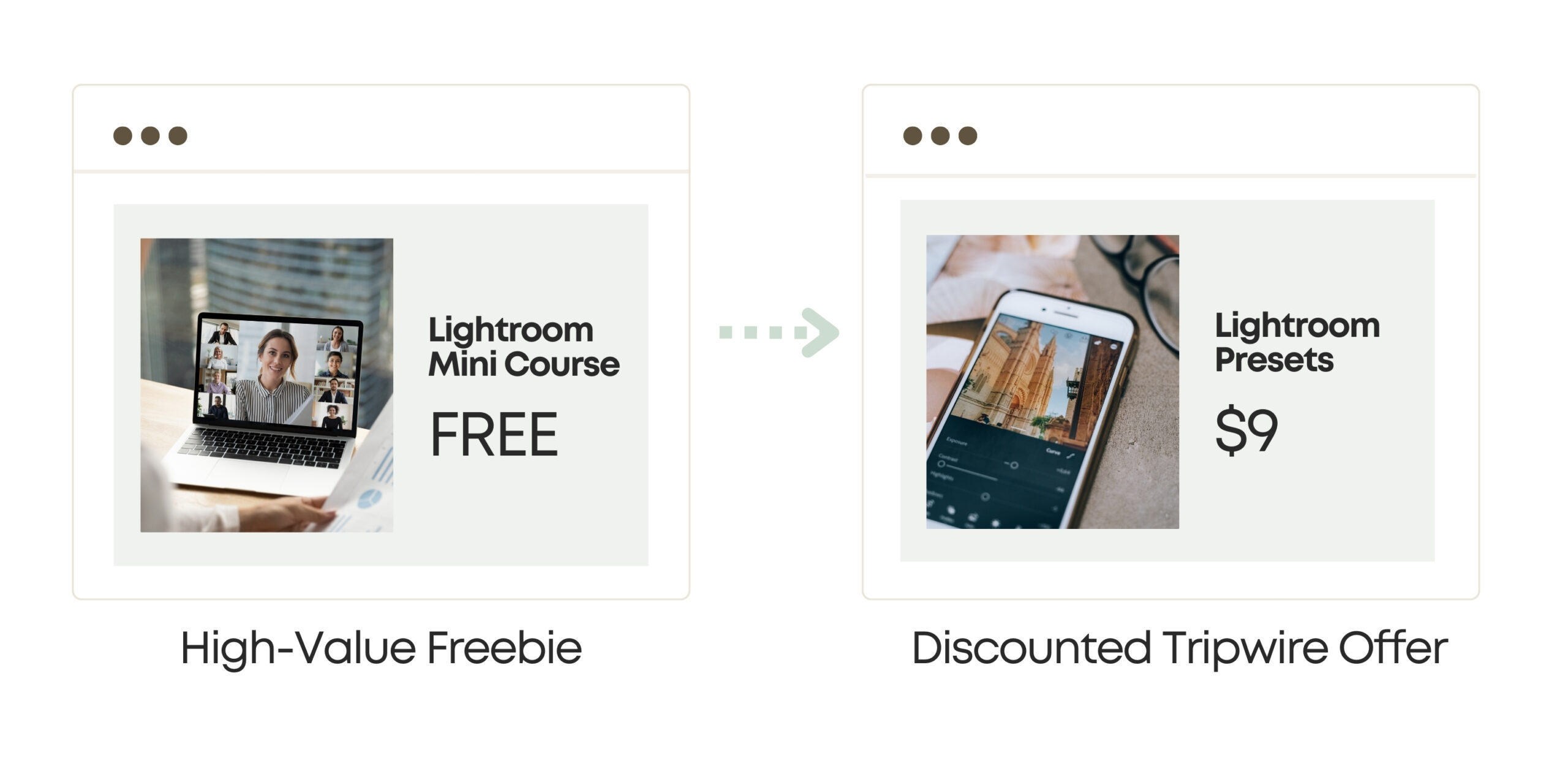
A high-value freebie is the foundation of a successful tripwire.
If your freebie doesn’t really grab their attention, a person will leave your website without even giving you their email address — and that represents a missed opportunity.
It’s only after someone accepts your freebie (by entering their email) that you’re able to show them the paid offers in your tripwire or nurture them with a follow-up sequence that introduces your paid offers. If you never get their email, you can’t do any of that.
Here are some tips for making your freebie irresistible:
- Be gracious: People should absolutely feel like they’re getting something that’s worth paying for. If your freebie feels incomplete, it will do nothing to build your reputation as a trustworthy and credible expert.
- Focus on solving one problem: A freebie should be easy to consume and easy to take action on. Don’t overload people with information; aim for immediate results or a quick win.
- Tie your freebie into your paid offers: Not only will this help you attract the most qualified leads, but it helps position your paid offers as natural next steps or “upgrades” to the value you’ve just given them.
#2 Pick a Low-Cost Tripwire Offer
Generally, the first paid offer in your tripwire should be priced between $5 and $50. The key is to make it a “no-brainer” purchase — low cost, low risk, and packed with immediate value.
Also consider making this offer a limited-time opportunity. Let them know they won’t find this offer at this price again if they don’t purchase it before leaving the page.
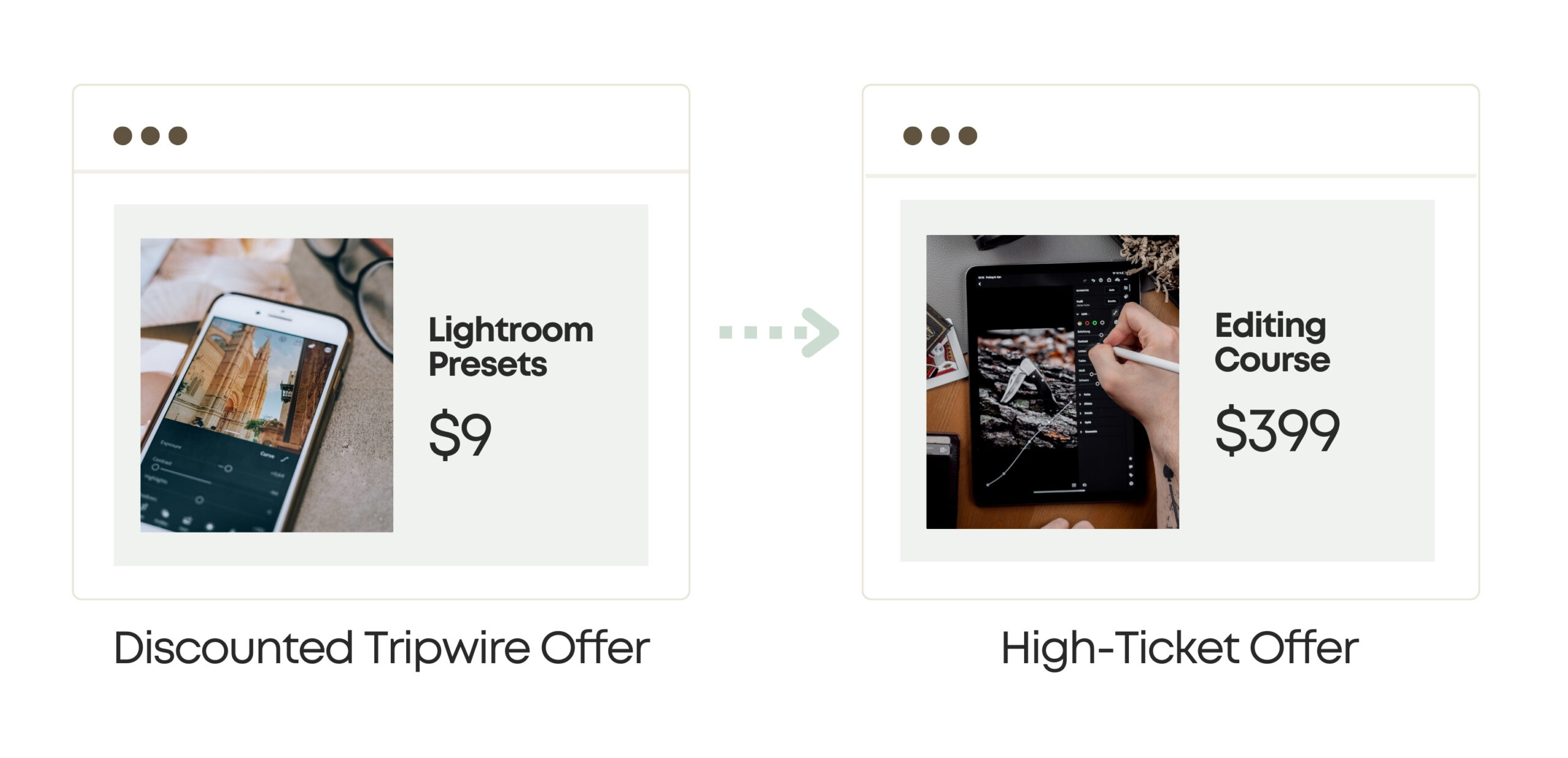
If your freebie is a calendar of social media prompts, your mini offer might be a set of ready-to-use Instagram Story templates. Other common offers include:
- Mini courses that cover what your freebie did in a more in-depth and “step-by-step” manner. Keep it focused on a powerful, measurable outcome that can be achieved in 5 days or less.
- Templates or tools that they can use right away, like a pack of Lightroom Presets. Again, the template should compliment whatever your freebie helps them achieve.
- Focused and highly actionable workbooks that will help them solve a pressing issue in your own special way.
#3 Layout Your Bundles & Addons
Once someone accepts your low-cost paid offer, you can present a higher cost, higher value offer during or after checkout. Again, it’s crucial that this offer amplifies or “completes” what they’ve already received.
For instance, if your mini offer is a $7 budget planner, your upsell might be a full financial coaching session for $49 where you’ll help strategize goals like paying off debt, buying a home, or preparing for retirement.
Consider the following strategies to maximize profits:
- Bundles: Consider combining related items into a discounted package. So if your mini offer is a month’s worth of recipes, offer to “upgrade” them to a bundle with weekly grocery lists, food diary/macro tracker, and a meal prep guide for those same recipes.
- Tiered Pricing: For your high-ticket offers, consider pairing it down to multiple price points, like the course alone for $97 or the entire program (course, workbooks, and one-to-one coaching) for $397.
- Order Bumps: On the checkout page itself, you can include a checkbox for an order bump (or two), like: “Add lifetime access to updates for $9”
#4 Design Your Landing Pages
You’ll need multiple landing pages to bring your tripwire together, including an opt-in page for your freebie, a thank you/bonus page for your mini offer, an upsell page for your higher-priced offer(s), and a final “thank you” page that’s shown when someone completes the checkout process.
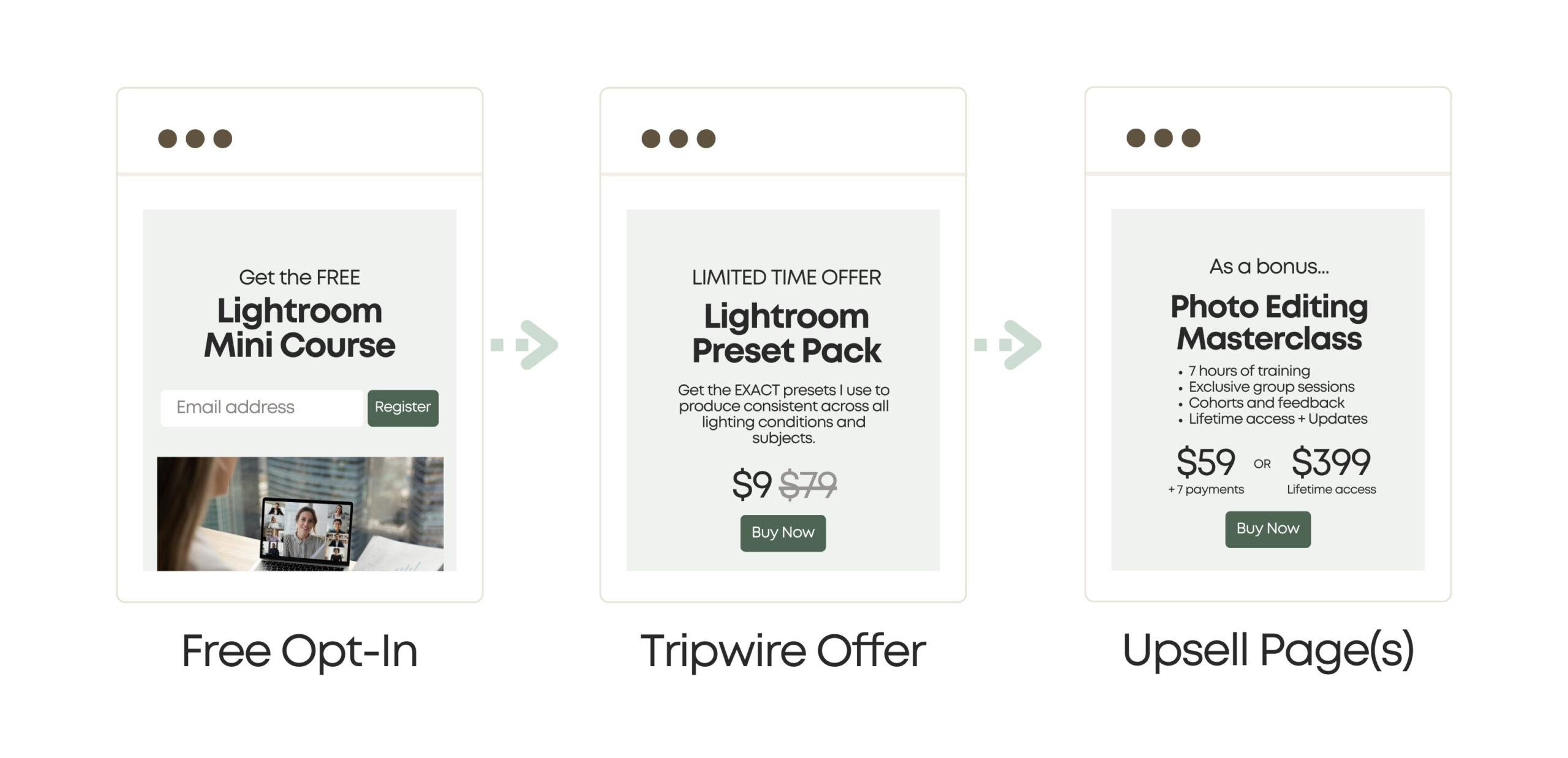
You’ll likely need to design some of your landing pages using your website builder (i.e., WordPress) and the rest within that your checkout software (i.e., Kajabi). For instance, my opt-in and mini offer pages are built in WordPress, but my upsell and “thank you” pages are built in Kajabi.
No matter where your landing pages live, they should all follow the same best practices:
- Keep people on the page: Simplify menus and eliminate unnecessary links. Many sales pages don’t have clickable headers or footers at all, just your logo and links to your refund policy or satisfaction guarantee.
- Lean into authenticity: Use “pushy” sales elements like countdown timers sparingly. Focus on featuring testimonials, ratings, and similar badges of honor to help build credibility. Share stories and case studies where possible.
- Don’t over-design it: Use white space and avoid unnecessary images, colors, or large blocks of text. Use headings and bold sub-text to communicate your messaging to those who are just skimming and scrolling.
- Focus on one goal: Avoid other calls-to-action like: “Contact us,” “Book a consult,” or “Join our list.” Stay focused on one goal (downloading or purchasing) and make the action button stand out from the rest of the page with a contrasting color.
#5 Write Your Email Sequences
An email sequence is a series of emails that are sent to someone automatically on a predetermined schedule, often over the course of a few weeks. With most email marketing platforms, you can even send a different sequence to someone based on the purchases they have (or haven’t) made.
For example, if someone downloads your free guide but turns down your mini offer, your email sequence might start by thanking them and giving them the download link. A few days later, you could send another email that builds value and, after that, re-introduce them to that low-cost offer.
The best part? You only have to write the emails once, and your email marketing platform will do the rest for you!
Ideally, you’ll write a few variations of your email sequence that will send based on how far along a person gets into your tripwire funnel. For instance, a person who buys your mini offer but not the bigger upsell should get a different set of emails than someone who purchases every upsell you put in front of them.
- Get The "Tripwire Sequence Swipe File"
#6 Use Campaigns to Drive Traffic
Driving traffic to your tripwire funnel is crucial, and one of the most effective ways to do this is through social media ads and paid search campaigns. I know they can be intimidating, but ad campaigns can quickly get your offers in front of a targeted audience — and they’re designed to be profitable!
- Let algorithms do the heavy lifting for you; don’t overthink demographics or interests when setting up your campaigns. Platforms like Facebook can find your audience fairly easily.
- Keep your ads simple and direct. Split testing variants of your ad’s images and copy will help you boost revenue — oftentimes, the prettiest or fanciest ad isn’t the best performer
- Give your ads a fair chance. Don’t set too low of a daily budget (<$15), make constant changes, or expect instant results. Launch your campaigns and wait a few days before you touch anything.
In my honest opinion, you do not need to hire an “ads expert” to run your campaigns. Advertising platforms (i.e., Facebook) want your campaigns to succeed and be profitable so you keep coming back. Plus, you can often score a $500 ad credit to get you going.
- Social Media Ads: Setting Up a Successful Campaign
#7 Test and Expand Your Funnels
Once your tripwire funnel is live and you’ve started driving traffic to it, the next step is to understand which elements of your funnel are working and what needs improvement. Tools like Google Optimize, OptinMonster, and Leadpages make it easy to optimize performance via split tests.
Split testing means creating two versions of a page, email, or ad and comparing their performance. For example, you might test different headlines on your landing page. Once both variations have had a sufficient amount of traffic (think 1,000 visitors), a winner will start to emerge. Even small tweaks, like changing the color of a button, can have a significant impact on conversion rates.
Once you’ve figured out what’s working, continue to expand your funnel by introducing additional tripwires and upsells or creating more personalized email sequences. Tools like Google Analytics or the reports available on your email marketing platform will help you further evaluate performance.
Tips for a Successful Tripwire
The best thing you can invest in when setting up a tripwire is your offers themselves. From your freebie all the way to your most expensive upsell, it’s the substance of your offers that will ultimately determine whether or not your audience converts. Of course, even the best offers don’t sell themselves.
Don’t rush your way through designing your pages or mockups, either. Keep your designs clean and simple so they steer eyes toward your benefits-focused messaging and call-to-action.
Perhaps most of all, realize that you’ll never see a sale if you don’t have enough traffic pouring into your funnel. And, in the likely event that you aren’t seeing thousands of organic visitors to your website every month, you’ll need to run ads — and that’s really not as scary as you might think!
Best Practices
- Consider alternative traffic sources: Newsletter and podcast sponsorships are often available at a fixed price and can be very effective in reaching your target audience.
- Don’t underestimate your email sequence: Did you know that 80% of sales happen after 5 follow-ups? Just because someone doesn’t convert right away doesn’t mean they’re a lost cause. Use those emails!
- Talk about your offer everywhere: Once your tripwire funnel is setup, share your freebie (the entry point to that funnel) everywhere it’s relevant. Think social media, your blog, popups on your website…
- Design your funnel to be evergreen: If you have the bandwidth, editing your landing pages and ads around major holidays and sales events can boost performance, but your initial version should be evergreen, meaning you can use it year-round for many years to come.
- Don’t shy away from sales tactics: Countdown timers, limited-time discounts, and “exclusive bonuses” can do wonders if your offer is genuinely valuable.
What's Next?
Until you’ve got a sales funnel on your website, you’ve got zero chance of generating revenue for your business. It might take about a week to get your first tripwire variation up-and-running but, once you do, you’ll have a foundation with endless potential.
Ready to dive deeper? I’ve got additional guides to help you build your funnel and boost its performance. Check out the links below.
- How to Build an Email Funnel
- Creating an Irresistible Freebie
- Designing The Perfect Opt-In Page
- Creating Mockups for Your Digital Products
- Pricing Your Sales Funnel Offers


